
Paul_Brighton/iStock/Getty Images
Ethiopia is a rich and vibrant country with a history that dates back thousands of years. Ethiopian recipes and food-related customs have been passed down through the millenia. The food of Ethiopia revolves around richly spiced meat and vegetarian curries and stews, eaten straight off the top of sourdough Injera bread.
Injera Bread
The Ethiopian meal revolves around the sourdough, pancake-like bread called Injera. Injera is made using the Teff grain and serves as the "plate" of the meal. Curry and stewed vegetables and meats are placed on top of the Injera bread. According to What's Cooking America, Teff is a tiny grain that is similar to quinoa or millet. Teff has a higher protein concentration than wheat and includes nutrients such as iron, calcuium and thiamin. The grain is also high in fiber. One full Injera pancake holds 379 calories and 1.2 g of fat.
Wot
Wot is the Ethiopian name for stew and is a blanket term used for a variety of stews. Red stews are seasoned with berbere, an extremely hot combination of red peper, ginger, cumin, cardamon, cinnamon and coriander. Yellow wot gets its color from tumeric. Spices are used medicinally and nutritional to treat common ailments. Tumeric and cinnamon are used to help control insulin levels. Ginger may help arthritis suffers and has anti-oxidant and anti-spasmodic properties.
Vegetarian Wot
Ethiopian food is slow-cooked and uses a variety of seasonal vegetables. Most Ethiopian restaurants serve vegetarian wot dishes on top of Injera bread as the staple of the meal. The vegetables in veggie wot dishes pack a powerful nutritional punch. MayoClinic.com recommends eating a diet that is rich in colorful vegetables. Vegetables supply essential vitamins and minerals in order for the body to function properly.
Protein
Protein is supplied in Ethiopian food through meat, beans or other legumes. Ethiopian culture dictates that pork should not be eaten and the meat generally used in Ethiopian cuisine is beef, lamb or poultry. Meat-based dishes, called tibs, are usually cooked with butter so can be high in fat and cholesterol. Beans such as chickpeas and lentils are added to vegetarian wot dishes and supply a low-fat protein alternative.
Iab
Iab is an Ethiopian side dish that has a consistency somewhere between cottage cheese and Greek feta cheese. Iab is eaten with savory dishes as a condiment or on its own. Dairy products are high in calcium and vitamins A and D. Calcium and vitamin D are integral in maintaining the integrity of bone structures, can help to keep the bones strong and prevent bone fractures at any age.
Related Articles

How to Eat Ethiopian Food
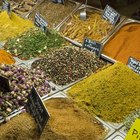
Afghan Spices
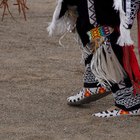
Hopi Indian Foods

What Type of Food Do People in Honduras ...
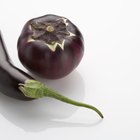
Low-Calorie Lebanese Food

Uses for Major Grey's Chutney

List of Cuban Foods
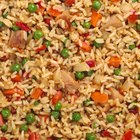
How to Cook Arroz Chaufa

How to Cook Japanese Teppanyaki

Types of Portuguese Sausage

Typical Portuguese Diet

Who Wears Red Fez Hats?
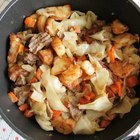
Traditional Irish Foods for Lunch
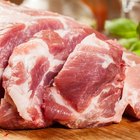
How to Make Asado Chinese Style

African Food Facts

Difference Between Hibachi & Teriyaki

Nutrition of Benihana Menu Items
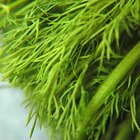
Classic Russian Spices

How to Cook Moose Meat
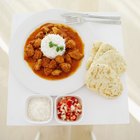
What Is Indian Flatbread Called?
References
Writer Bio
Nicole Carlin is a registered yoga teacher. Her writing has been published in yoga and dance teacher training manuals for POP Fizz Academy. Carlin received a Masters of Arts in gender studies from Birkbeck University in London and a Bachelors of Arts in psychology from Temple University, Philadelphia.
Photo Credits
Paul_Brighton/iStock/Getty Images